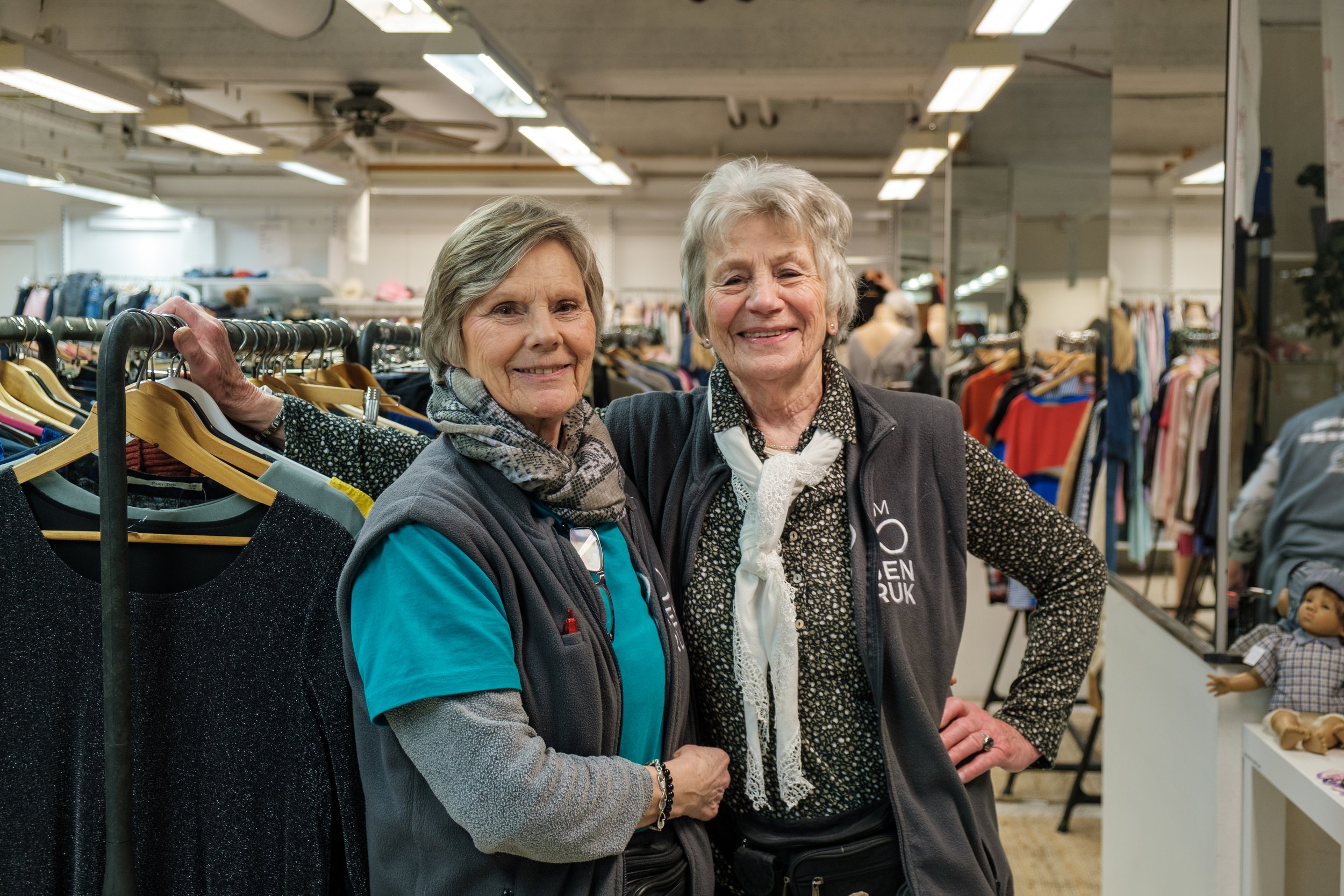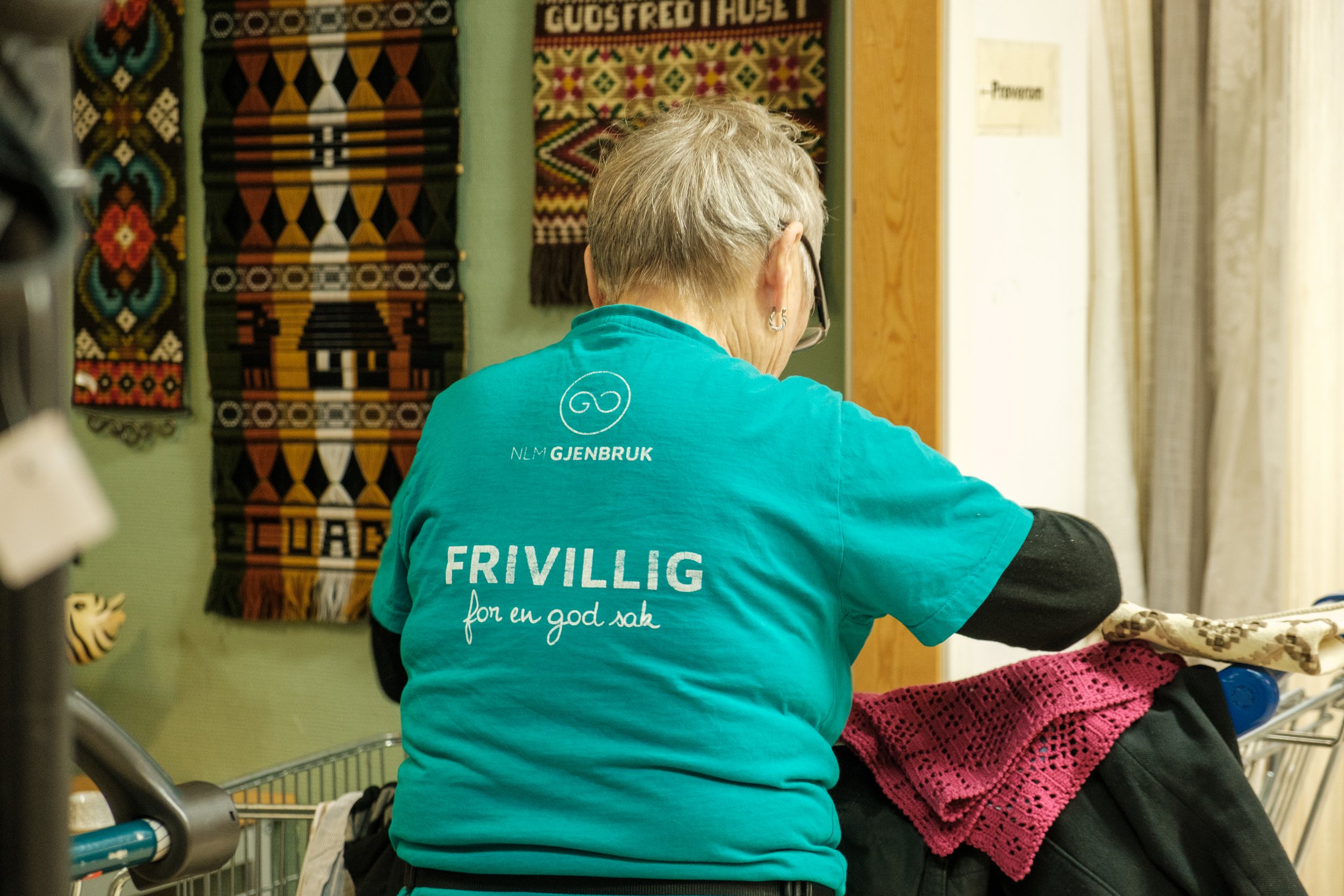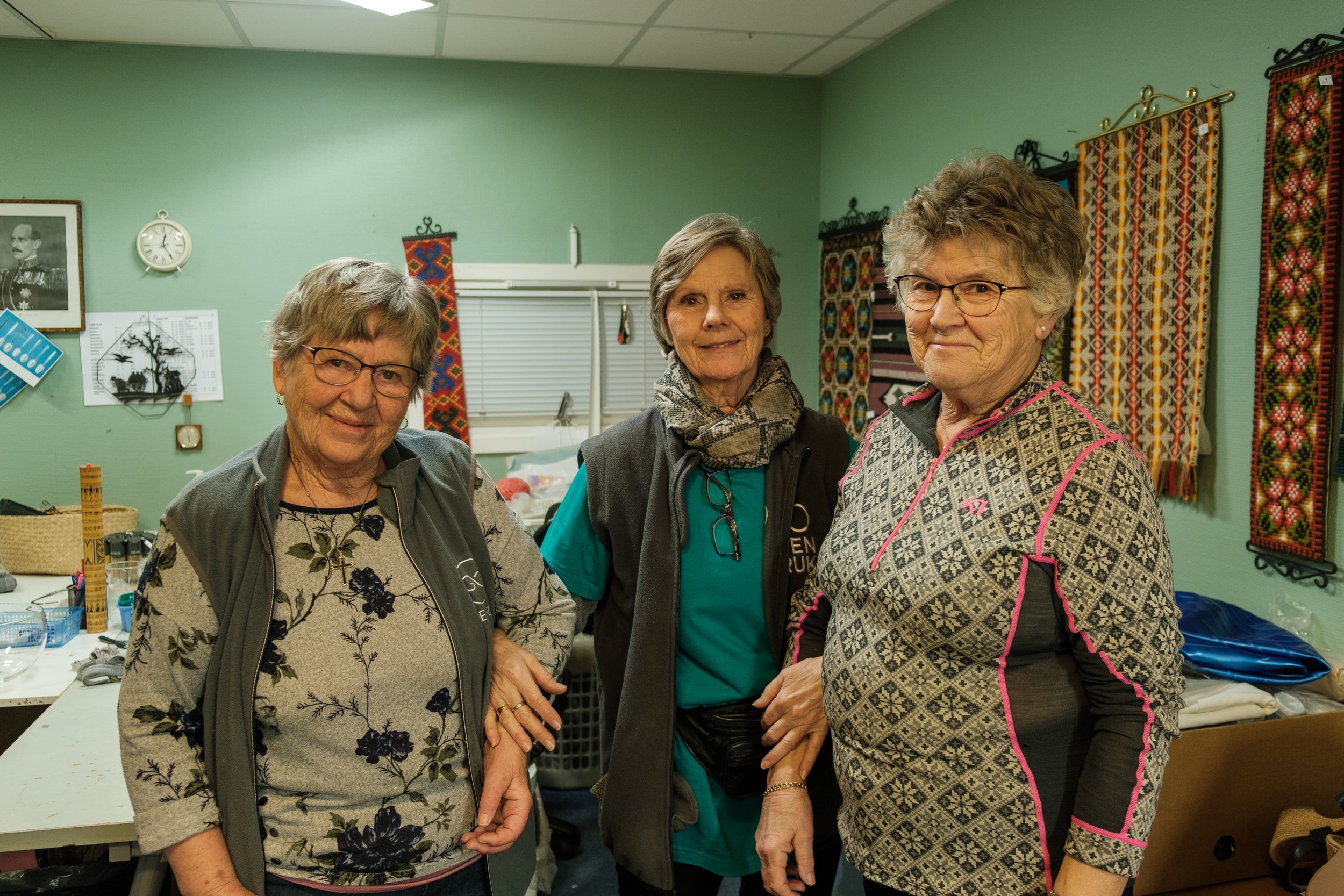WO USED MUGS WITH THE SECOND-HAND STORE

WO USED MUGS WITH THE SECOND-HAND STORE
Journalist: Håvard Røgeberg Magelssen
Photographer: Marie Tjelta
Translator: S. Faseeha F. Gillani
I, like many other students, have visited NLM Gjenbruk Ås to find both sustainable and cheap clothes and things. As I try to navigate among fun and retro treasures from the past, I often encounter the heartwarming smiles of the volunteer pensioners who work there. Who exactly are these dedicated people who spend their afternoons giving old objects new life? Tuntreet visited the second-hand store to get to know them better.
A charitable purpose
It is a Saturday afternoon and the shop is full of people of all age groups. Students looking at jewellery, families with young children looking at clothes and pensioners looking at fashion. Up in all this, I sit down in a corner of the shop where I meet Karin and Anne Marie, who are in the process of setting prices for the goods they bring in. “Look at it, that’s nice!” exclaims Anne Marie as she picks up a great retro suit jacket. “It is elegant,” replies Karin. “What will we take for it? It must be 250,” they both agree.
Despite the busy rush hour, I get the opportunity to get to know these volunteer women better. Karin has been a volunteer at the shop ever since it started in 2009. Furthermore, I find out that the actual chain that is NLM second-hand shops started about 20 years ago. You will find NLM’s stores all over the country, all of which are run by volunteers, and where the surplus income they get goes to the Norwegian Lutheran Mission’s charity projects. In total, the chain receives approximately 100 million a year, of which the profit, i.e. that which does not go to operating costs, is approximately 50 million. Their projects are focused on the UN’s sustainability goals and nowadays s c h o o l s , health and water are on the agenda. For example, one of the projects is working against maternal and child mortality in Ethiopia. Outside the store you will also find collection boxes where you can donate clothes that go to Eastern Europe, they have 1000 of these boxes located all over Norway.
Everyday life as a volunteer
Most of the clothes you find in the actual shop at Ås are brought in by the people themselves. Just during the hours the shop had been open this Saturday, Karin and Anne Marie’s stock of items to be priced had doubled. During the conversation, various people came in with everything from Chinese antiques to children’s clothes that they wanted to give away. “Many are grateful to deliver the goods here rather than throw them away”. Karin tells. Store manager Svein comes by from time to time and joins the conversation when he is available during the Saturday rush. It is Saturdays that are the busiest day, and the day where they sell the most. Svein says that last Saturday they were sold for approximately NOK 33,000. Fine old objects are constantly turning up, which Karin and Anne Marie admire and discuss the prices of. “There’s a lot of nice things that come in, and also an incredible amount of strange things, things I’ve never seen before”, laughs Karin.
The best part about the store
“What’s the best thing about volunteering” is a question I tried to ask everyone who worked that day. One of the answers that got repeated was the feeling of fellowship. “I feel so comfortable here, incredibly nice feeling of fellowship and incredibly nice customers” smiles Karin. The community they find in each other covers much of their social needs, as well as a meaningful everyday life. “I would have walked on the wall if I had been at home,” replies a volunteer named Sølvi. Most of the volunteers at the second-hand service are pensioners over 80, and for them it is also important to have an active and creative everyday life. “It’s life-prolonging,” grins Sølvi. They get a lot out of everyday life in addition to the fact that their work goes to a good cause. For Karin, missionary work is very important, “It benefits people from other places in the world”. Sølvi also adds that it is good that their work also contributes to sustainability. “It teaches us that we don’t need to buy new”, which she also sees has only become more and more popular over the years she has worked here. Finally, they add that you do not have to be a pensioner to be a volunteer at the second-hand shop, if you are a student you are most welcome to visit and work with them on Saturdays or other days you have time.
After my visit to the second-hand shop, it was hard not to smile widely. The voluntary pensioners had welcomed us warmly and spoke passionately about the work they do all ages. Both as a student and a pensioner, we find it meaningful to work for a greater cause than ourselves. for both the climate, developing countries and our wallets. If there is anything this shows us, it is that volunteering is a thing at all ages. Both as a student and a pensioner, we find it meaningful to work for a greater cause than ourselves.







